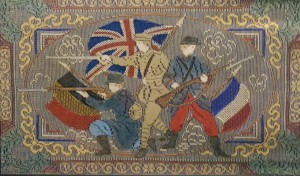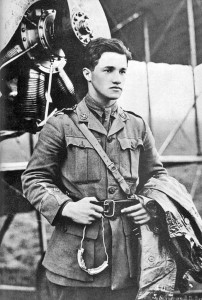Trent to Trenches is the official commemorative project of Nottingham City and County. Michael Noble paid a visit to see how the first ‘global war’ remained steadfastly local.
Whether by sending its young men off to fight on land, sea and air, by contributing materially to the war effort or by banding together as the costs of the conflict grew, every corner of the country was affected in some way by the First World War. The local impact of the war remains a powerful one and is central to the Trent to Trenches project in Nottingham.
sending its young men off to fight on land, sea and air, by contributing materially to the war effort or by banding together as the costs of the conflict grew, every corner of the country was affected in some way by the First World War. The local impact of the war remains a powerful one and is central to the Trent to Trenches project in Nottingham.
The central exhibition, based at Nottingham Castle, weaves the local seamlessly through a series of objects and stories that nonetheless reflect the global nature of the war. A detailed timeline, painted onto the walls, matches events in Nottinghamshire with those that took place around the world. As visitors progress through the displays (a skilful blend of the chronological and the thematic) materials such as uniforms, letters, diaries and photographs, many of which were kindly loaned by local people, emphasise the ‘Nottingham-ness’ of the war. A lace panel, reflective of one of the town’s traditional trades, portrays British, French and Belgian soldiers as they would have appeared at the start of the war. A huge Union Jack dominates one wall. Its origin? HMS Nottingham, the light cruiser that was sunk by a U-boat in 1916.

The Nottingham had recently taken part in the Battle of Jutland, which was not the only major engagement that had a local angle. During the Battle of the Somme, the Sherwood Foresters were deployed at Gommecourt, towards the northern end of the line. Their role was a diversionary one, intended to draw German attention away from the main assault further south. The exhibition tells the story through an emotionally affecting film which cleverly uses local information to make it familiar: the territorial gain was ‘the distance from Nottingham Castle to Radcliffe-on-Trent’. Doing that in the East Midlands would cost you about two hours on foot. In France on the 1st July 1916 it cost the Sherwood Foresters 424 officers and men.
Further familiarity is found in the personal. You can see Nottingham schoolboy Raymond Pegg’s beautifully illustrated diary in which he commented on the development of the war with the eager pupil’s eye for details of flags and military equipment. The diary, in Raymond’s well-drilled handwriting, is accompanied by photographs of the lad as he would have appeared in between making entries and is a fascinating insight into the mental world of a young civilian at the time.

Flying Ace Albert Ball, a local and national hero, is given a section to himself, with photographs, clothing and other items of interest including his personal weapons. Ball, the son of a wealthy Nottingham businessman, was born on Lenton Boulevard in 1896 and fostered an early interest in engineering which led him to pursue a wartime career in the air. As with so many early airmen, this career was a painfully short one, which ended in 1917 in a crash at Douai in France, but it was a successful one and Ball was the most successful British airman at the time of his death. The ‘Wonder-Boy of the Flying Corps’, his exploits were celebrated internationally, and even acknowledged by Manfred von Richthoffen, the ‘Red Baron’, who described him as ‘the best English flying man’. For all this celebrity, the most resonant aspect of the Ball exhibit is the local and personal -his signature on his flying certificate, the images of his family or the photograph of him as a toddler at home in Nottingham, a local lad from the very beginning.
The Trent to Trenches exhibition is at Nottingham castle from Saturday 26th July – Sunday 16th November 2014.